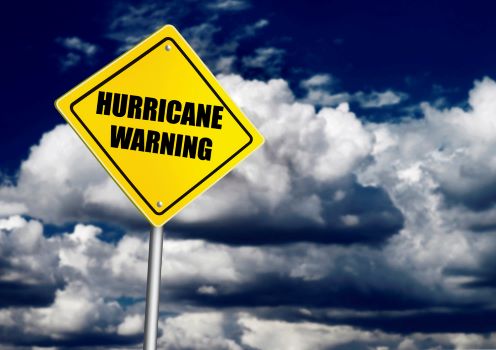Assistance for Hurricane Ian Exceeds $4.5 Billion

Florida has seen some of the most significant migration in the country since the start of the COVID-19 pandemic, but new residents are learning the hard way that living in the Sunshine State does come with some downsides, including severe weather.
Recently, FEMA reported that assistance stemming from Hurricane Ian exceeded $4.5 billion, underscoring the importance of protecting yourself as a homeowner in Florida. For example, understanding flood insurance in Florida is incredibly important.
The Impact of Hurricane Ian
Hurricane Ian hit southwestern Florida in September as a Category 4 storm. It had already left behind destruction in the Caribbean, especially the Cayman Islands, Jamaica, and western Cuba. After the hurricane crossed over the Florida peninsula, it started weakening into a tropical storm.
Then, Ian strengthened once again over the water, becoming a Category 1 storm as it hit near Georgetown, South Carolina.
As a tropical storm, Ian had maximum winds of 105 mph, making it the strongest hurricane in September in this part of the Caribbean since 2007. As it became a hurricane, Ian gained at least 35 miles per hour in wind speeds within a 24-hour period.
The storm became a Category 4 on September 28, when it was located over the Gulf of Mexico. It had maximum sustained winds of 155 mph, making it almost a Category 5.
It was the fifth-strongest hurricane to ever hit the U.S., and it was the first Category 4 storm to hit southwest Florida since 2004 with Charley.
The storm brought major winds and rainfall to the western coast of Florida, as well as horrific storm surges. There was a storm surge of 12-18 feet reported along the southwestern coast of Florida, with the city of Fort Myers being hit by a 7.26-foot surge. That was a record high.
FEMA Assistance
More than $4.5 billion in disaster loans, federal grants, and premiums for flood insurance have been provided to Florida as a state and to individual households because of Hurricane Ian. FEMA says it’s provided $871 million to affected households and $503 million to the state for its emergency response.
The U.S. Small Business Administration provided $1.42 billion in disaster loans, while the National Flood Insurance Program paid $1.72 billion in claims to survivors of the Hurricane.
FEMA has been sending Disaster Survivor Assistance specialists throughout Florida neighborhoods on a door-to-door basis to help people register for assistance. They’ve visited hundreds of thousands of homes, according to FEMA reports.
The National Flood Insurance Program, which is operated by FEMA, has received more than 45,500 flood insurance claims, and policyholders may be eligible to receive up to $1,000 in reimbursement for purchasing supplies like plastic sheeting, lumber, and sandbags. Some people may also be eligible for reimbursement of up to $1,000 for storage expenses if they moved property that was insured.
FEMA is advising policyholders to file a claim for flood loss avoidance reimbursement, regardless of whether it actually prevented flood damage.
Eligible survivors may be able to receive Disaster Unemployment Assistance and file a claim for income loss.
Property Owners Required to Buy Flood Insurance
Hundreds of thousands of people who own property in Florida are required to buy flood insurance under a precedent-setting bill that was recently approved by the state legislature, making it the first mandate of its kind.
The requirement applies to state properties regardless of whether they’re located in high-risk flood zones. These insurance plans might end up costing thousands of dollars a year for some homeowners.
The bill was approved two months after Ian caused its catastrophic damage, and almost no one where it hit in southwest Florida has flood coverage, according to reports.
Supporters of the requirement say it could provide protection for people whose homes are damaged by storms because flood coverage is usually not in homeowners’ policies.
Federal lawmakers are struggling to get homeowners across the country to buy flood insurance as well.
Under federal law, you’re required to have flood insurance in a flood zone if your home is secured by a federally-backed mortgage.
Many people don’t comply with that requirement, though. Less than 4% of U.S. households have coverage through FEMA’s National Flood Insurance Program, the primary provider of flood coverage in the country.
In Florida, which is the most flood-prone state in the country, just 19% of households have flood insurance.
Seven million households don’t have it.
The flood insurance requirement passed in Florida was passed during a special session. Many local insurers have gone bankrupt since 2022 because of mounting losses and extensive property damage. That meant that hundreds of thousands of Florida residents had been forced to buy policies through Citizens Property Insurance Corp., which is the state-operated insurer of last resort.
Florida is the most expensive state in the nation for coverage related to property, according to the Insurance Information Institute.
The bill includes provisions the insurance industry has long been fighting for to reduce their losses, including one that’s meant to discourage policyholders from filing lawsuits that challenge settlement offers they don’t think are adequate.
Advocates of the new legislation say it will help insurance companies in the state and homeowners.
The requirement applies only to property owners with coverage through Citizens Property Insurance, which is the largest property insurer in the state, covering 1.2 million properties.
The requirement is being phased in over a period of four years, beginning in April with people who have properties in flood zones.
A policyholder can avoid the mandate if they drop their policy with Citizens and instead get coverage through an insurer that’s part of the private sector.
Another goal of the new requirement is to avoid conflicts that occur between Citizens and policyholders over whether damage from storms is because of the high winds or flooding. Citizens and other insurance companies are notorious for denying claims after storms because they attribute damage to flooding, which isn’t covered by their policies.
When a Citizens policyholder has a flood policy, the hope is the new measure will eliminate litigation that would otherwise follow a claim.



